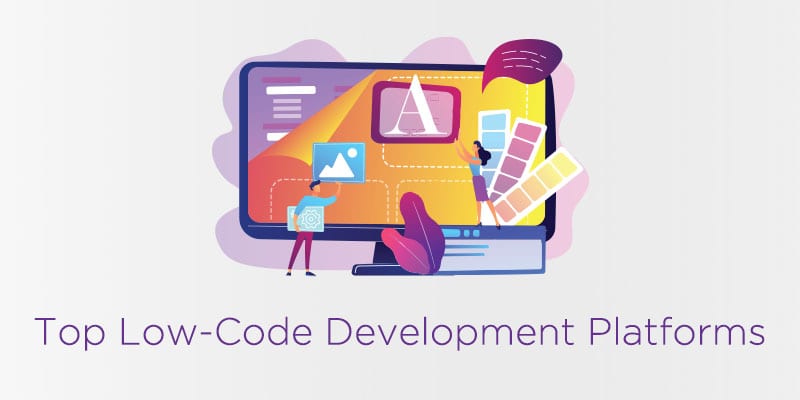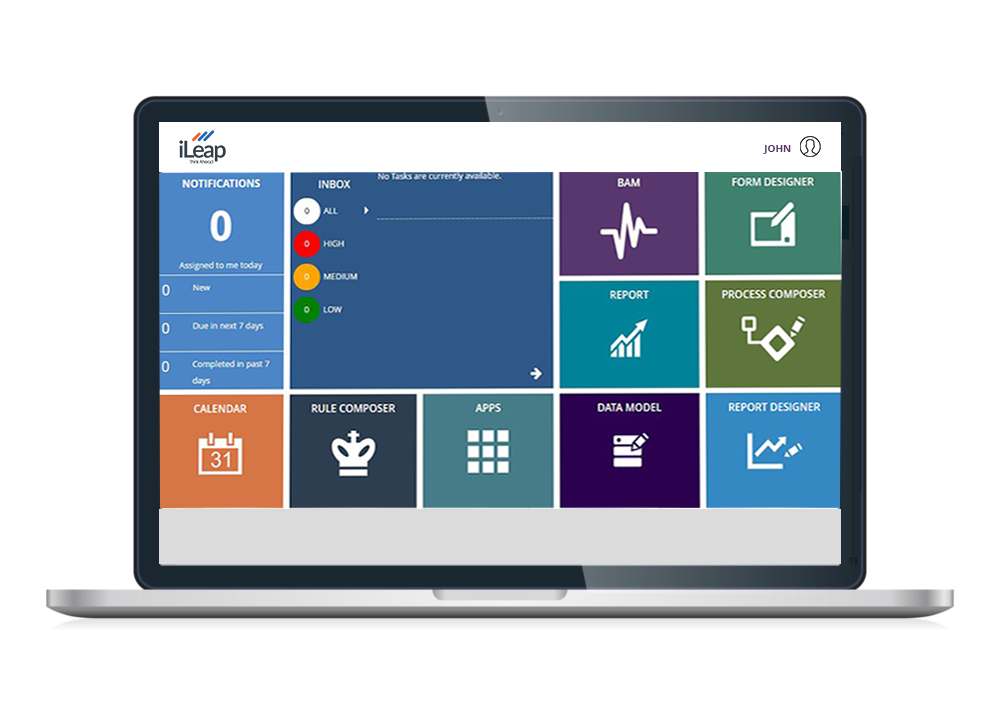Good News To Picking Low-Code Platform Sites
Good News To Picking Low-Code Platform Sites
Blog Article
Benefits Of Low-Code Application Development In Terms Of Accessibility To Non-Developers
Due to a number of important factors, Low-Code Application Development is available to non-developers. These are referred to as "citizen designers."
Drag-and-drop Builders: Lowcode platforms provide drag-and-drop interfaces, which allow nondevelopers to visually create applications without the need for code. This makes development more accessible to people without backgrounds in technology.
WYSIWYG Editors: "What You See Is What You get" editors let users build interfaces and workflows a manner that closely resembles the final product, making it easier to comprehend and use.
Simplified Design of Logic and Workflow
Visual Workflow Modeling - Users are able to design business processes and logic applications by using visual flowcharts or models. This is a lot more intuitive than traditional programming methods.
Logical Components Pre-built: Many low-code platforms have pre-built components for logic (e.g. loops, conditions), that can be easily configured. This reduces the requirement to write complex programs.
Reusable templates and components:
Libraries of Templates that are pre-built Numerous platforms that provide low-code come with templates for the most common applications. This lets developers start quickly and efficiently, while non-developers can customize the templates as they see the need.
Reusable modules and widgets: The creation of web pages is made simpler by using reusable components and modules. This reduces the requirement for technical expertise.
Tutorials and guides for development:
Step-by-Step Instructions: Platforms typically provide guided development paths, tutorials, and on-screen tips to assist non-developers in creating applications.
Interactive Tutorials Interactive tutorials are interactive and hands-on, which help users to learn through doing. This boosts their confidence in the platform.
Integration with Tools Already in Use
Seamless Integration: Low-code platforms are designed to be easily integrated with existing business tools and systems (e.g. CRM, ERP ERP, CRM) which allows non-developers to create applications that work within their current workflows.
APIs and Connectors Built-in APIs and connectors simplify the integration process by allowing non-developers to connect their applications with external services, without requiring complex coding.
Collaboration Features:
Team Collaboration: Features like real-time collaborative workspaces, as well as shared workspaces make it feasible for non-developers to collaborate effectively with developers, business analyst and other key stakeholders.
Access Control Based On Roles: Developers who are not developers are able to be assigned roles and access levels that allow their participation without compromising security or functionality.
Automated testing and debugging
Low-code platforms come with tools for testing and debugging that are built in. They automate this process, making it easy for non-developers to ensure that their apps function.
Error-highlighting: The platform provides information on issues and suggestions to help non-developers.
Low-code development is easier for non-developers to access because it democratizes the development process. Low-code platform platforms empower business users by providing them with easy-to-use, visual and guidance tools. They can then actively take part in the process of developing and maintaining applications. Follow the top Low-code Platform for application development advice for blog tips including mobile development platforms, build a docker container, rapid application design, ms azure sql, paas service, app platforms, app platforms, rapid applications, paas service, database in azure and more.
Scalability And Flexibility Are The Two Major Benefits Of Low-Code Application Development
Low-code development of applications offers a variety of advantages when it comes to scalability and flexibility, which are crucial for building applications that expand with the needs of businesses and adapt to changing requirements. Here are the main benefits: Rapid Scaling:
Cloud-Based Deployment: A lot of low-code platforms are cloud-based that allow applications to scale effortlessly with the cloud infrastructure. Businesses can handle higher loads without having to worry too much about administration of servers.
Auto-Scaling Features: Built-in functions that automatically scale resources in order to accommodate demand and ensure constant performance with no manual inputs during peak hours.
Flexible Architecture:
Modular Design: Low-code systems support modular application design, where components can be independently developed as well as tested and scaled. Modularity increases flexibility, and it is easier to update specific parts of an app without having to alter the whole system.
Microservices Integrate: They allow applications to scale and be flexible by allowing them to be built as a collection of loosely connected services.
Customizable Options:
Extensibility: Low-code platforms typically allow custom coding and scripting, allowing developers to expand the capabilities of the applications beyond what is available out-of-the-box. This guarantees that specific business requirements can be met without a limit.
Third-Party Integrations: The integration of third-party services, APIs or other services enables companies to expand the capabilities of their application by adding additional functionalities.
Agile Development and deployment:
Continuous Delivery & Deployment Low-code Platforms support agile methodologies through enabling continuous integration and Continuous Delivery (CI/CD). This allows applications to be upgraded and upgraded quickly as a result of user feedback.
Iterative development: Low-code development is iterative meaning that applications can be scaled and enhanced in a gradual manner. This reduces the risk of massive changes, while also allowing an controlled growth.
Resource Optimization
Efficient Resource Management: Low-code systems help maximize the use of resources by offering instruments for monitoring and controlling the performance of applications. They ensure that resources can be utilized efficiently and can be scaled up or down depending on actual requirements.
Load balancing: The application can handle high traffic efficiently and with a high degree of consistency thanks to the integrated load-balancing capabilities.
Global Reach
Multi-Region Integration: Low code platforms can be implemented across many geographic regions. This enables companies to offer users low latency internet access across the globe. This is important, especially for applications that serve global users.
Localization Support built-in support for localization lets applications easily adapt to various languages and regional requirements, enhancing their flexibility in various markets.
Updates and maintenance
Simple Maintenance : Low-code apps' visual and modular nature simplifies maintenance tasks. This lets updates and bug fixes be made quickly, with no extensive downtime.
Version Control - Integrated versions control systems can assist you in managing updates, rollbacks and changes. They will ensure that they can be released safely and previous version can be restored when necessary.
Cost Efficiency:
Low Development Costs. Through the reduction of coding requirements, low-code platform platforms lower the development cost and permit applications to be scaled up without increasing development efforts.
Pay-As-You Go Models: A lot of low-code platforms offer flexible pricing models, such as pay-as-you-go, which align costs to actual use and growth, offering the flexibility to finance.
Low-code development provides businesses with numerous advantages, such as scalability, flexibility and flexibility. This lets them develop robust, flexible, and scalable applications. These platforms can respond quickly to changing needs, resource efficiency and continuous improvements, allowing for applications to grow along with the business. Check out the recommended a replacement about Enterprise application development with Low-code Platform for blog examples including azure sql databases, push notifications android, develop web application, application modernization software, no code platforms, lowcode no code, develop mobile application, database in azure, push notifications android, cross platform mobile dev and more.
Benefits Of Low-Code Application Development With Regard To Customization And The Limitations
Low-code is an approach that is balanced and permits significant customization and addresses weaknesses. Here are some of the principal benefits: Handling limitations:
Overcoming Complexity Barriers:
Simple development: Low-code platforms streamline the process by offering templates and pre-built components. This helps speed up applications to be deployed, even complicated ones.
A lot of platforms come with wizards and workflows that are guided to help developers navigate difficult procedures. These tools minimize the risk of mistakes and also help to ensure uniformity.
Solutions for scaling:
Scalability built-in: Low-code platforms are often equipped with capabilities that permit an scalable architecture. This enables applications to handle greater loads without major redevelopment.
Performance Monitoring: The tools that track and optimize performance can help make sure that applications run efficiently even as they expand.
Security and compliance:
Integrated security features: Low-code platforms offer security measures like encryption, role-based control of access and automated compliance checks that address security issues.
Platforms regularly update their security protocols and ensure that they are in compliance with the regulatory requirements. This helps keep applications safe from emerging threats.
Customization capabilities:
Extensibility:
Low-code platforms permit developers to extend functionality beyond standard offerings by using custom code.
Custom Plugins and Modules Developers can design custom plugins or modules to provide specific features that are adapted to unique business requirements.
APIs and Integration:
API Support. Complete API support allows seamless integration between other systems and services, allowing the most extensive customization and connection.
Third-Party Platforms: Lowcode platforms are often pre-built with connectors for third-party applications. This makes it easier to integrate these applications and personalize the app.
Flexible UX/UI Designs:
Customizable User Interfaces: Designers can alter and design user interfaces that comply with branding and usability specifications, creating a tailored user's experience.
Responsive Web Design The built-in design responsive features allow applications to be customized depending on the size of the screen and the device.
Business Logic Customization
Visual Workflow Builds Visual tools that permit the modification of business workflows and rules as well as to design complicated, tailored procedures.
Conditional Logic and Scripting : Platforms support conditional logic as well as custom scripting in order to comply with specific business rules.
Data Management
Custom Data Models: Developers may create custom data models to fit specific needs of the application to ensure that data processing is tailored to business requirements.
Advanced Data Processing: Integration of advanced tools and capabilities to process data allow for customization of the way data is processed in an application.
How do you balance personalisation and limitations:
Frameworks and Standards
Low-code platforms encourage industry best Practices and Standards: Low code platforms encourage the adherence of industry best standards and practices. This allows for the maintenance of high-quality, secure and adaptable applications.
Governance Frameworks - Built-in governance frameworks ensure that customizations don't affect security, integrity, or the observance of regulations.
Iterative Development and Feedback
Rapid prototyping: The capability to rapidly prototype and test customizations ensures that developers can iterate based on user feedback improving the app to better satisfy the user's needs.
Low-code platforms are built to allow for continuous advancement. This allows for customizations and upgrades as the business needs change.
User Empowerment:
Empowering Citizen developers: Low-code platform's intuitive interfaces allow non-developers make customizations. This boosts the number of people who can contribute to enhance and modify applications.
Training and Support: A lot of platforms offer extensive training and support resources to assist users with effective customizations without compromising the application's stability or performance.
Overall, low code application development provides a robust framework to address issues and offer a wealth of customization opportunities. This allows companies to develop and maintain applications that are both functional and tailored to meet specific business requirements. While maintaining security, quality, scalability, and standards.